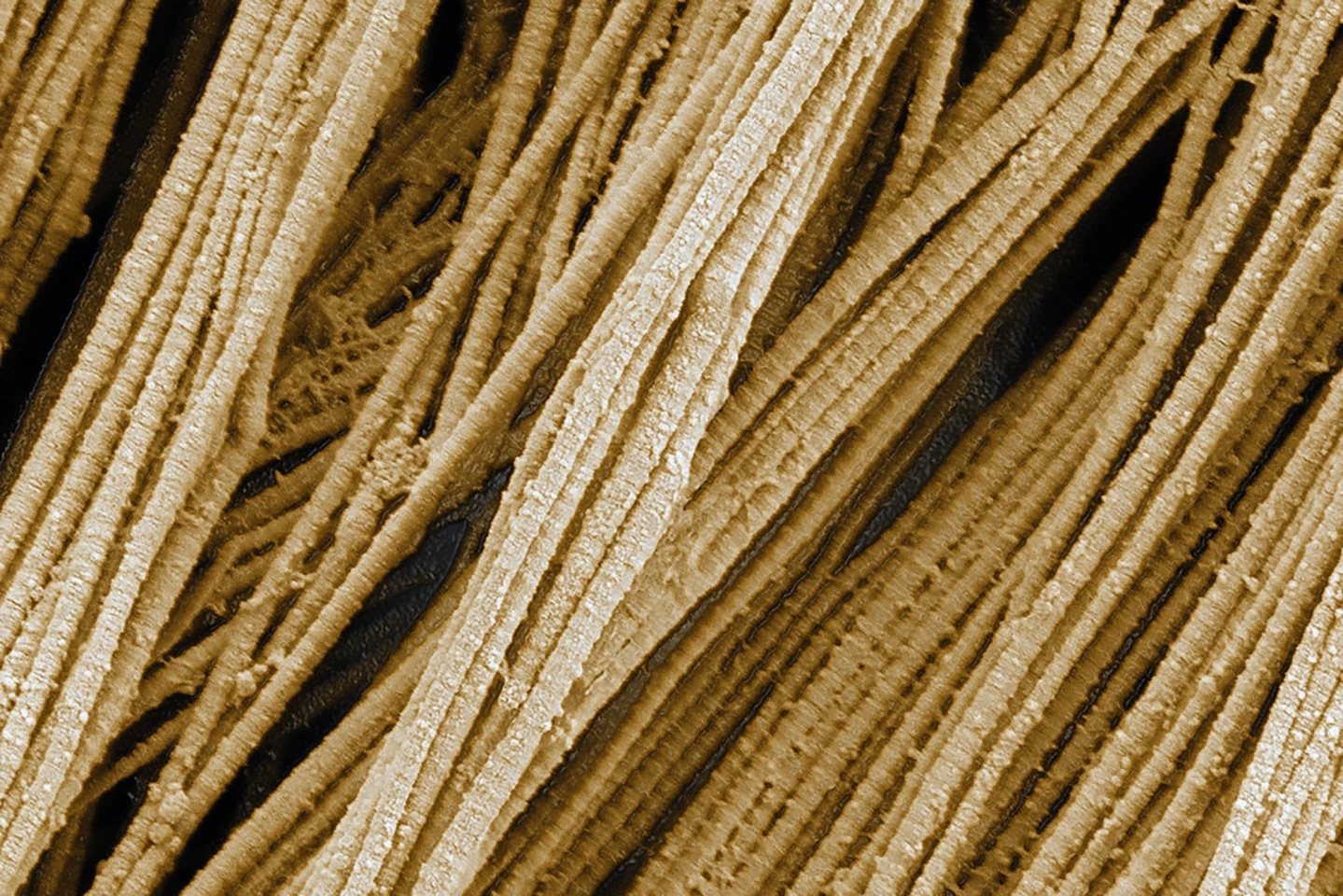Why do wrinkles form as we age? A new study has revealed that aging skin stretches more sideways under tension, causing it to buckle – like Silly Putty – into deeper, straighter wrinkles. And it all starts with how collagen is arranged.
Wrinkles. They’re a natural part of aging. While some of us wear them as a badge of honor, others use various methods to try to erase them. Scientists have long believed that a combination of genetics, sun damage and other environmental factors causes wrinkles, but a new study has shed more light on what’s happening beneath the surface.
Aiming to understand how and why human skin forms wrinkles with age, researchers from Binghamton University in the US undertook the first experimental investigation into how the aging process changes skin’s behavior and structure.
“This is no longer just a theory,” said Guy German, Associate Professor of Biomedical Engineering at Binghamton and the study’s corresponding author. “We now have hard experimental evidence showing the physical mechanism behind aging.”
Collagen can be thought of as a bunch of thick, strong protein fibers twisted into ropes that form a supportive scaffold beneath the skin’s surface. It is what provides the skin with its mechanical strength and elasticity. Collagen fibers in the skin’s dermal layer, or dermis, which sits between the outer epidermis and the deepest layer, the hypodermis, aren’t randomly placed. They’re mostly arranged in bundles that tend to run in a dominant direction, depending on the body part. This dominant direction creates something called “Langer’s lines,” natural lines of tension in the skin.
The arrangement of collagen fibers gives skin anisotropic properties, meaning it behaves differently depending on the direction in which it’s stretched. If the skin is pulled along the fiber direction, it’s strong and stretchy. Pulled against the fibers and it resists more and wrinkles differently.
For the present study, the researchers took skin samples from seven donors (taken during elective surgeries or from cadavers) aged 16 to 91. To avoid UV-related damage, the samples were taken from areas not exposed to sun. Thin strips of skin were cut either along or across the natural collagen fiber orientation. Samples were stretched with a controlled force for 40 minutes to mimic the skin’s natural tension.

The researchers measured how the skin stretched (axial strain), compressed sideways (transverse strain), and calculated Poisson’s ratio, a measure of how much the skin thins when stretched. They used a silicone mold to capture the wrinkle shape and depth and analyzed wrinkle tortuosity (how twisted or straight the wrinkles were), width, and depth using microscopy. Skin weight and volume were measured before and after stretching to assess fluid loss, a sign that the skin tissue shrinks in volume under tension (a test of poroelasticity).
They found that older skin compressed sideways much more under the same amount of stretch. This leads to a larger Poisson’s ratio, indicating actual volume loss, or that fluid has been squeezed out of the skin matrix, the scaffolding in the dermis that includes collagen fibers. Older skin also had deeper, wider wrinkles, confirming that it’s more prone to buckling under normal forces. Wrinkles in older skin were straighter, possibly due to structural changes like flattening of the junction between the dermis and the epidermis and collagen loss.
German explained the study’s findings using a more straightforward, real-world comparison.
“If you stretch Silly Putty, for instance, it stretches horizontally, but it also shrinks in the other direction – it gets thinner,” he said. “That’s what your skin does as well. As you get older, that contraction gets bigger. And if your skin is contracted too much, it buckles. That’s how wrinkles form.”
The study has some limitations. The experiments only tested skin under a single direction of tension, whereas real skin is subjected to multi-directional forces in daily life. The researchers defined “old” as age 65 and over, which may not precisely reflect biological skin aging. All younger samples were from females; older ones were mostly male. While the researchers argue this didn’t affect their findings, it may still introduce bias. The study also excluded photoaged (that is, UV-damaged) skin to focus purely on intrinsic aging, which limits real-world relevance since more wrinkles are influenced by sun exposure.
Putting aside these limitations, however, the study has real-world implications. Primarily, it provides a better understanding of how wrinkles form. The identification of transverse strain and poroelastic effects as key drivers of wrinkles can inform next-gen topical treatments or devices. Understanding the biomechanics of aging skin may improve surgical planning, cosmetic injections, and laser treatments by targeting the collagen fiber alignment and poroelasticity of tissue. Finally, the study’s findings could be applied to other tissues like brain, heart, and bone, where mechanical anisotropy and poroelasticity also play a key role.
However, until the study’s findings translate into new anti-aging treatments and products, the researchers have offered some free, albeit well-known, advice.
“If you spend your life working outside, you’re more likely to have more aged and wrinkled skin than those who are office workers, for example,” said German. “Chronological aging and photoaging give you similar results. So go and have a fab summer, but don’t forget the suntan lotion – your future self will appreciate it.”
The study was published in the Journal of the Mechanical Behavior of Biomedical Materials.
Source: Binghamton University






